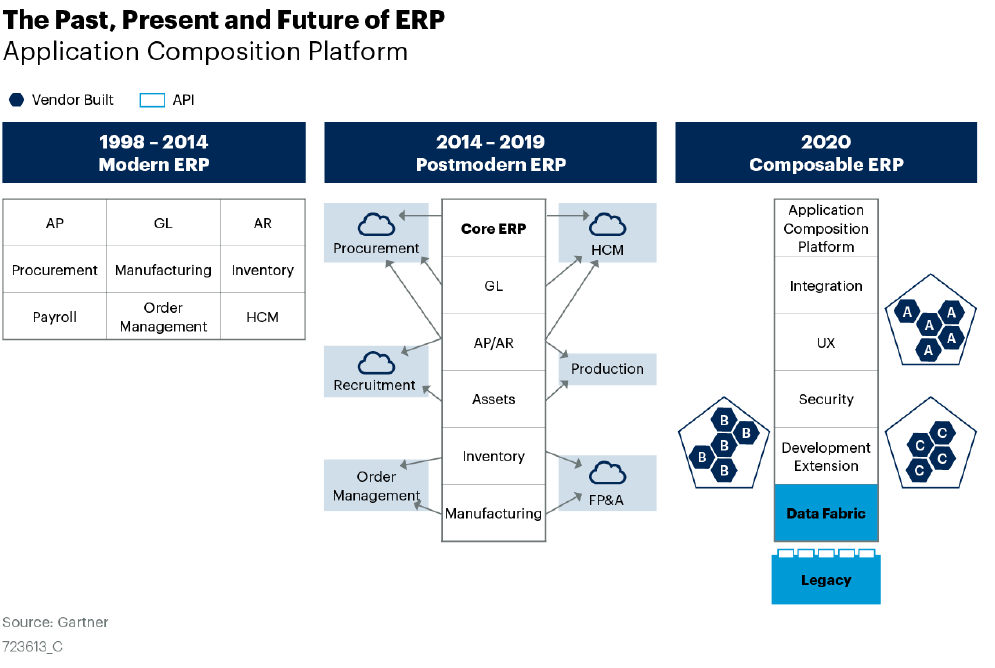 Anthony Cecchini is the President and CTO of Information Technology Partners (ITP), an ERP technology consulting company headquartered now in Virginia, with offices in Herndon. ITP offers comprehensive planning, resource allocation, implementation, upgrade, and training assistance to companies. Anthony has over 20 years of experience in SAP business process analysis and SAP systems integration. ITP is an Appian, Pegasystems, and UIPath Low-code and RPA Value Added Service Partner. You can reach him at [email protected].
Anthony Cecchini is the President and CTO of Information Technology Partners (ITP), an ERP technology consulting company headquartered now in Virginia, with offices in Herndon. ITP offers comprehensive planning, resource allocation, implementation, upgrade, and training assistance to companies. Anthony has over 20 years of experience in SAP business process analysis and SAP systems integration. ITP is an Appian, Pegasystems, and UIPath Low-code and RPA Value Added Service Partner. You can reach him at [email protected].
The future state of ERP will be defined by integrated applications that can be composed and recomposed to deliver customer-defined business capabilities and outcomes. Composable ERP is an agile technology strategy that can adapt and enables the foundational, administrative and operational digital capabilities enabling an enterprise to keep up with the pace of change. This type of strategy delivers a core of composable applications and, as a service, software platforms that are configurable, integrated and flexible to meet future modern technology innovations.
Wow, that was a mouthful. Let’s look at how we meet the changing business needs today in our ERP system. Today we allow customization within the ERP applications to meet the demands of the business; working within a proprietary technology stack of the “monolithic approach” that ERP vendors deliver. The ERP black box adheres to proprietary, static data models, development/integration tools and business logic. The result are systems that lack agility and are unable to adapt in the face of change. The Covid-19 Crisis is a perfect example. Consider that 84% of companies have changed their operations to remain relevant in the disruption caused by the pandemic.
Wait a minute…. I can hear you saying well this isn’t that different than the Postmodern blog from last month. Well you are right there is a baseline here, but you will see that Composable ERP take the Postmodern strategy to the cloud with SaaS, and PaaS, and Data fabrics, the final frontier that ties us to our ERP vendor by exploding the concept of a static Data model.
Ok, let dig deeper……
Here is a diagram of the changes to the ERP landscape through the years.

The current ERP landscape is centered around the ERP vendor product with integration. The gaps in ERP solutions are filled haphazardly, and migration plans only emphasize moving to the cloud. Nevertheless, a true transformation of the ERP landscape should focus on long-term value for your enterprise. To do this, application leaders should prepare for composable ERP with a shift to customer focus from vendor focus.
ERP is a strategy, not a product, as such, the ERP strategy requires constant engagement review and innovation. A crucial part of this strategy is the understanding that you are not at at the mercy of any vendor, and the set of technical internal (or third-party system integrator) resources that have been used to date. Remember, initially ERP is primarily and essentially a strategy for aligning the application portfolio to business objectives. Gone are the days where organizations could put ERP solutions in place and “not worry” about them until the next upgrade in five to seven years.
Composite architecture is one of the emerging trends predicted to drive technological innovation in the next 5-10years. This is an innovation that is agile by design, enabling quick adaptation to business environment changes. Composite architecture forms the foundation of composable ERP.
Composable ERP denotes an adaptive technology approach that supports an organization’s operational, administrative, and foundational capabilities. In so doing, companies can keep up with changes in their operating environments. With an investment in composable ERP, you get a stable foundation of composable applications and highly configurable software platforms that allow a quick adaptation to emerging modern technologies. The ERP core in composable ERP is surrounded by an abstracted layer allowing quick adoption of emerging technologies and capabilities. This layer enables new apps to integrate seamlessly and access data within an enterprise application system.
An forgotten promise of the monolithic ERP architecture was a single data model to provide visibility of end-to-end transactions. However, in order to accommodate the unique data requirements of customers, the ERP vendors provided environments for customizing their ERP installation. This is where we now look to data fabrics and the use of integration. Typically integration is thought of as a phase during an ERP implementation, or an ongoing maintenance activity.
Below is how this might look….
1. Align to company objectives
ERP is not a singular business application but rather a strategy. To this end, it needs continuous engagement, review, and innovation to actualize the highest benefits for your business. ERP is meant to align the application portfolio to your business objectives. To align your ERP solution to your business objectives with as minimal risk as possible, you must enlist and engage business leaders to establish a roadmap detailing what IT as a service will deliver.
While previous ERP solutions were owned by IT following consultation with business leaders, composable ERP is managed by both IT and business leaders. You can also not simply install your solution and upgrade it after 5-7 years as was typical in the past. You must own the solution and continually review its benefits for your company while aligning it to your objectives.
2. Update master data, analytics, and integration strategies
One of the unfulfilled promises of the traditional ERP model was the provision of end-to-end transaction visibility. This was only possible with the customization of a solution to accommodate your data requirements. With composable ERP, your company can freely deploy any combination of services, point solutions, and suites that even a heavily monolithic traditional ERP solution would not.
Your IT department can integrate the data and applications needed to deliver specific strategic capabilities for your business. It can also get a standardized global scale for as many capabilities as you might need to work with your business partners while integrating multiple clouds to deliver end-to-end processes.
As your business changes and needs new models, composable ERP will recompose your applications to achieve new capabilities. The two key initiatives to enable the recomposition are the ownership of the data and integration strategies. In traditional ERP solutions, the data integration and strategies were dictated by vendors since they owned the data models.
Here are some recommendations to ease your updating of master data, analytics, and integration strategies for composable ERP:
- Architect your application portfolio to effortlessly span several suites, clouds, and applications to reduce dependence on customizations.
- Support formation of a hybrid combination strategy to enable a vendor-agonistic and flexible composable ERP approach. This way, you can accommodate diverse and evolving technologies.
- Invest in a reliable data management plan focusing on your business needs instead of a one-stop ERP architecture. This positions the composable ERP for growth.
- Organize for continuous incremental business value
The application leaders for composable ERP should be the leaders and coordinators of the business vision you have when investing in the technology. This ensures you get the right balance between your priorities and the technical complexities of composable ERP. As your business model changes, so should your strategic roadmap. Applications and data must also keep pace with the changes. At times, you might need to replace or renovate your composable ERP.
One value of the composable ERP solution is that it has mechanisms that review your business and measure aspects that need improvement. You should own and operate your composable ERP strategy based on the elements in your strategic roadmap to get insight into areas that need improving.
If you do not get your desired results, you should reevaluate your processes so that you improve future results. This evaluation should also assess whether the application you are using can deliver the required functionality and whether your results fit the purpose for which you are using composable ERP. Furthermore, as your company evolves, get metrics that determine the success of your ERP strategy.
Here are some recommendations for organizing your composable ERP solution for continuous incremental business value:
- Maintain your ERP leadership team long after you go live and use it to evaluate then update your ERP strategy regularly.
- Calculate your chosen metrics for assessing the efficacy of composable ERP periodically, then refine your strategy as needed.
- Support company-led initiatives that evaluate new applications for improving the user interface, automation, or real-time responsiveness.
- Reskill the ERP support team
To actualize the highest benefits from composable ERP, emphasize generalist skills in your ERP team rather than a single superstar talent. Focusing on one skill will put you at risk of the narrow approach that caused the significant technical debt associated with traditional ERP solutions. Orient your ERP team towards adopting open technologies and platforms.
Your team members should upgrade their skills in querying, application architecture, coding with different languages, and report building. The new technologies that come with composable ERP need a thought process that has undergone constant learning so that people can apply the lessons they have learnt. To some extent, your composable ERP solution will need you to test different hypotheses to find what works best for your objectives.
Summary
So there you have it. Composable ERP takes the Postmodern strategy to level of decomposition even at the core. It even includes the data model. So where is the value? The value of the composable ERP will be found in the business outcomes that are enabled by the ERP ecosystems of applications, integration platforms and data fabrics. The new technologies introduced by these ecosystems require a train of thought that requires constant learning and application of the lessons learned. The IT team evaluates and proposes new technologies that accelerate ERP value for the business. The business utilizes the testing and scenario-building environments, provided through technology, to test for the value of new business models or functionality.





